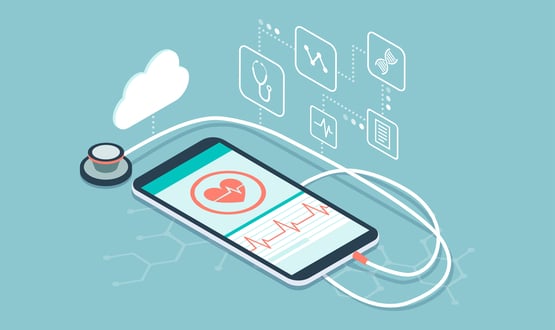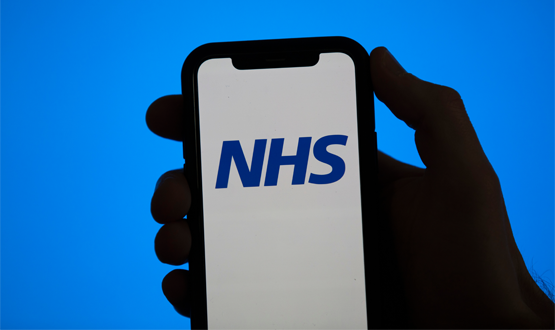Exploring common digital health challenges
- 3 March 2022

China and the UK may be separated by many thousands of miles but, as a recent Royal Society of Medicine event proved, these are two countries facing similar digital health obstacles and opportunities. Claire Read reports.
Guilan Kong and her colleagues are in the process of building a major healthcare data project. The idea is to use information collected as part of routine care to monitor outcomes and quickly identify improvements in care, with a specific focus on the diagnosis and management of chronic kidney disease.
“It’s a promising but challenging job for our team to build this learning health system,” explains Kong. “It’s not easy for healthcare organisations to share patient data and there are ethical and legal issues.”
Her experience will sound familiar to anyone who has grappled with interoperability and information governance concerns in the NHS (which is basically anyone who’s ever worked in the NHS). But Kong is based in China – she’s an associate research professor at Peking University’s National Institute of Health Data Science – and the project on which she and her colleagues are working is for the district of Ningbo City, in the country’s Zhejiang province.
It goes to show that while the UK and China may be separated by 5,000 miles, the digital health opportunities and challenges being faced in each nation are very similar. With that in mind, the Royal Society of Medicine recently organised two webinars to explore those commonalities and share learning.
“An extraordinary acceleration”
Run over two days in January, and delivered by the RSM’s Digital Health Section supported by the British Embassy in Beijing, the sessions were opened by by her majesty’s trade commissioner John Edwards, and by RSM president Roger Kirby. Speakers from both the UK and China explored how digitisation has made a difference since Covid-19 emerged, and how it can continue to play an important role in the coming months and years.
Each referred to what Tim Ferris characterised as “an extraordinary time for the acceleration of the intersection of digital technologies and healthcare”. Ferris, who’s director of transformation for NHS England and NHS Improvement, suggested that this pandemic-driven “explosion of digitisation” now means there are “many more possibilities in the use of technology to address our highest priorities”.
That includes moving care closer to the patient, with Ferris pointing to a particularly innovative example from the Isle of Wight where chemotherapy treatment has been delivered to patients via drone.
The event suggested these “highest priorities” are – in both the UK and China – multi-faceted, diverse but interconnected. One key theme is supporting a workforce which has been under severe pressure for two years and which in some specialities, most notably diagnostics, is insufficient to meet need.
Joe Harrison, chief executive of Milton Keynes University Hospital NHS Foundation Trust, spoke of an organisation that has sought to bolster flexible working. “We have got our clinicians to a place whereby they are able to work from home, clinically, doing outpatient clinics, doing virtual ward rounds, and being able to connect anywhere in the country or, indeed, globally. From a safety perspective, that provides a huge step-up and also it enables our clinicians to work from home and get that better work-life balance.”
Supporting the workforce
NHS England leaders, meanwhile, hope that the national health data platform built to deal with Covid-19 will support effective use of staff capacity in the recovery phase. A pilot is currently underway to explore this.
“We’ve worked with trusts to bring together the data that they have from the electronic records into the data platform,” explained Ming Tang, chief data and analytics officer for NHS England and NHS Improvement.
“That allows consultants to manage their waiting list and make sure that they understand the prioritisation of those patients. Then once they’ve cleansed that data, [we] bring together information from other areas: planning information, scheduling or rostering information. That theatre understanding has really been powerful for us to be able to make sure we maximise the utilisation of the theatres.
“We’ve really had some substantial benefits from that, from reducing cancellations, no shows but also making sure that the clinicians are actually in charge of their activity and their workload.”
The platform has been supported by Palantir Technologies. The firm’s managing director for global health and life sciences, Justin Whatling, argued the pandemic “has brought into sharp focus the need to integrate data and processes at an enterprise level. If we can do that, we can surface a 360-degree view on what’s happening across an enterprise to help clinicians and operational staff make better decisions”.
Patient power
Of course it is not only those working in healthcare systems who have become more familiar with the use of digital over the past two years. Patients have increasingly used electronic means of accessing healthcare as well. Murray Ellender founded eConsult seven years ago, with a mission to gather information from patients online prior to a GP consultation. The pandemic has led to a huge increase in its use.
“We saw 10 times growth in utilisation over the course of early 2020,” he explained. “We were doing about 120,000 online consults a month through the platform prior to this. That’s now running about 1.2 million a month.”
In China, the use of so-called ‘internet hospitals’ has similarly increased. Feng Zhang, product director of Medlinker Internet Hospital – an integrated healthcare platform with 62 ‘departments’ – explained that on Chinese New Year 2020 (25 January) “daily active users for Internet Hospital platforms increased 1.4 million compared with 2019”.
The health functions of Tencent’s WeChat app – which is the most widely used social media platform in the country, but on which via which users can access many other apps – have also become more frequently used than ever before. China’s citizens can use the software to request medicines, book appointments and view their own health records.
“During the height of Covid, we had about 350 million users using our many programs in healthcare,” explained Alex Ng, vice president of Tencent Healthcare. “It has since come down quite a lot, but we’re still averaging around 100 million users per month.”
The ZOE Covid Study App is another example of how the pandemic has altered digital engagement with citizens. Built within five days and launched at the end of March 2020, when the UK was in its first lockdown, the app enables individuals to report daily symptoms.
“Currently we have about one million regular loggers, which is pretty impressive two years into a study, and these people are logging most days,” reported Tim Spector, who is a professor of genetic epidemiology at King’s College London and leading the project.
The data gathered has already led to over 20 journal papers on Covid as it relates to factors including deprivation, obesity, diabetes, smoking and ethnic background. It has also provided an evolving list of symptoms for the virus as new variants have developed. And Spector sees further potential.
Looking to new possibilities
“We now have roughly one million of our users who have consented to a long term follow up of their health, looking at dementia, heart disease, cancer, mental health. I think this is a really exciting development of how we might be able to use real time reporting of symptoms for general health service use.”
It shows the extent to which the pandemic has accelerated pre-existing digital plans while also revealing new areas for exploration. Several presenters at the event argued that artificial intelligence remains an area of particular promise. Raymond Moh, co-founder of BioMind, spoke of the company’s diagnostic solution which can screen medical images for abnormalities; Christopher Kelly, a research scientist at Google Health, hoped that AI might help address the reality that the NHS has “fallen behind in preventative care, particularly for under-served populations” by triaging cancer screening (“can it prioritise those urgent images that radiologists should see now?”)
A company showcase that rounded off the second of the sessions, meanwhile, profiled a range of organisations aiming to find ways to support clinical decision making, improve outcomes, and connect healthcare data more effectively.
Which solutions will gain most ground, whether in China or in the UK or both, remains to be seen. But Sultan Mahmud, director of healthcare at BT, offered a firm overall conclusion: “I think it’s an inevitability that digitisation is going to dominate over the next 10-20 years”. And this event proved that statement applies equally in both UK and Chinese healthcare.




